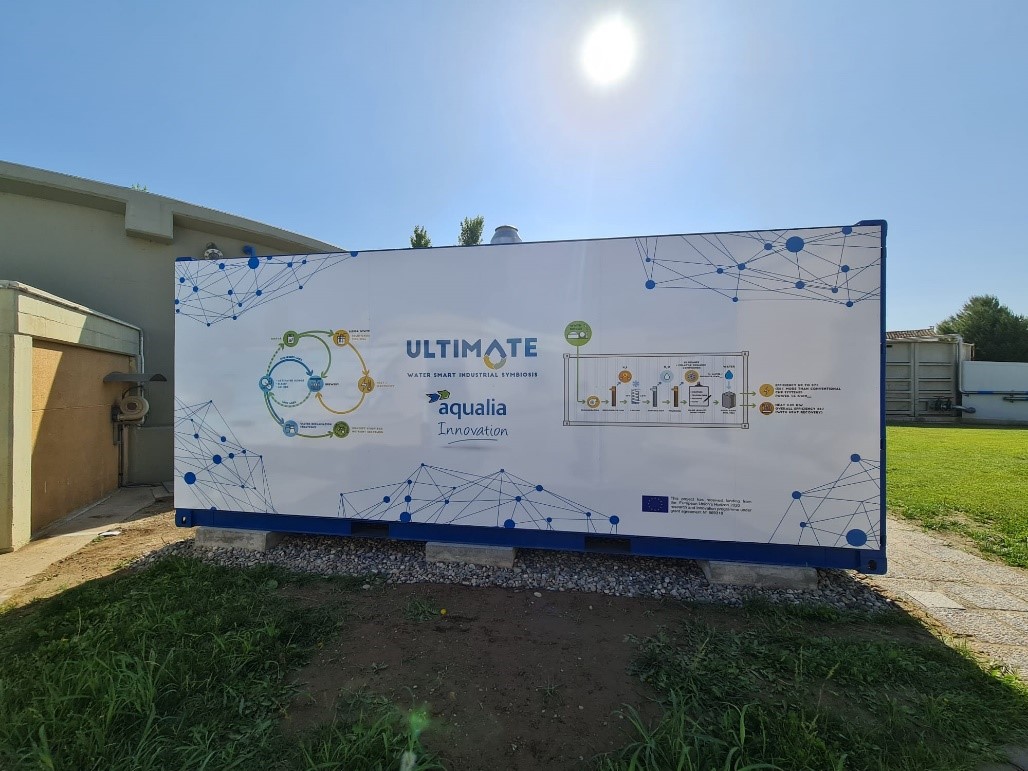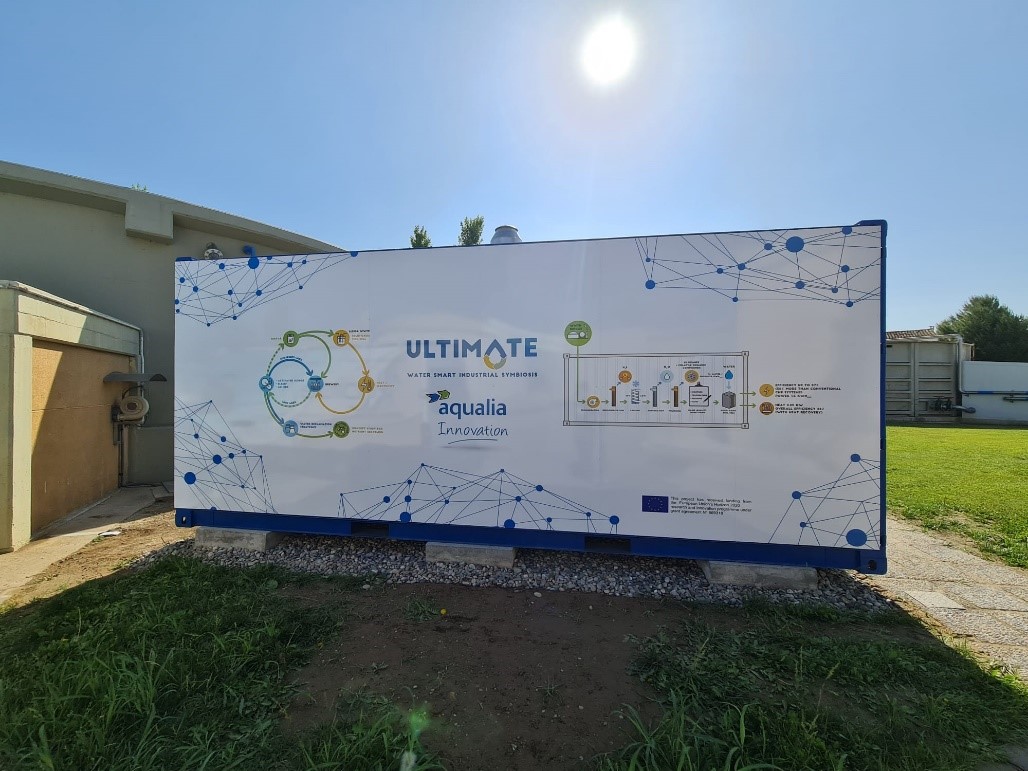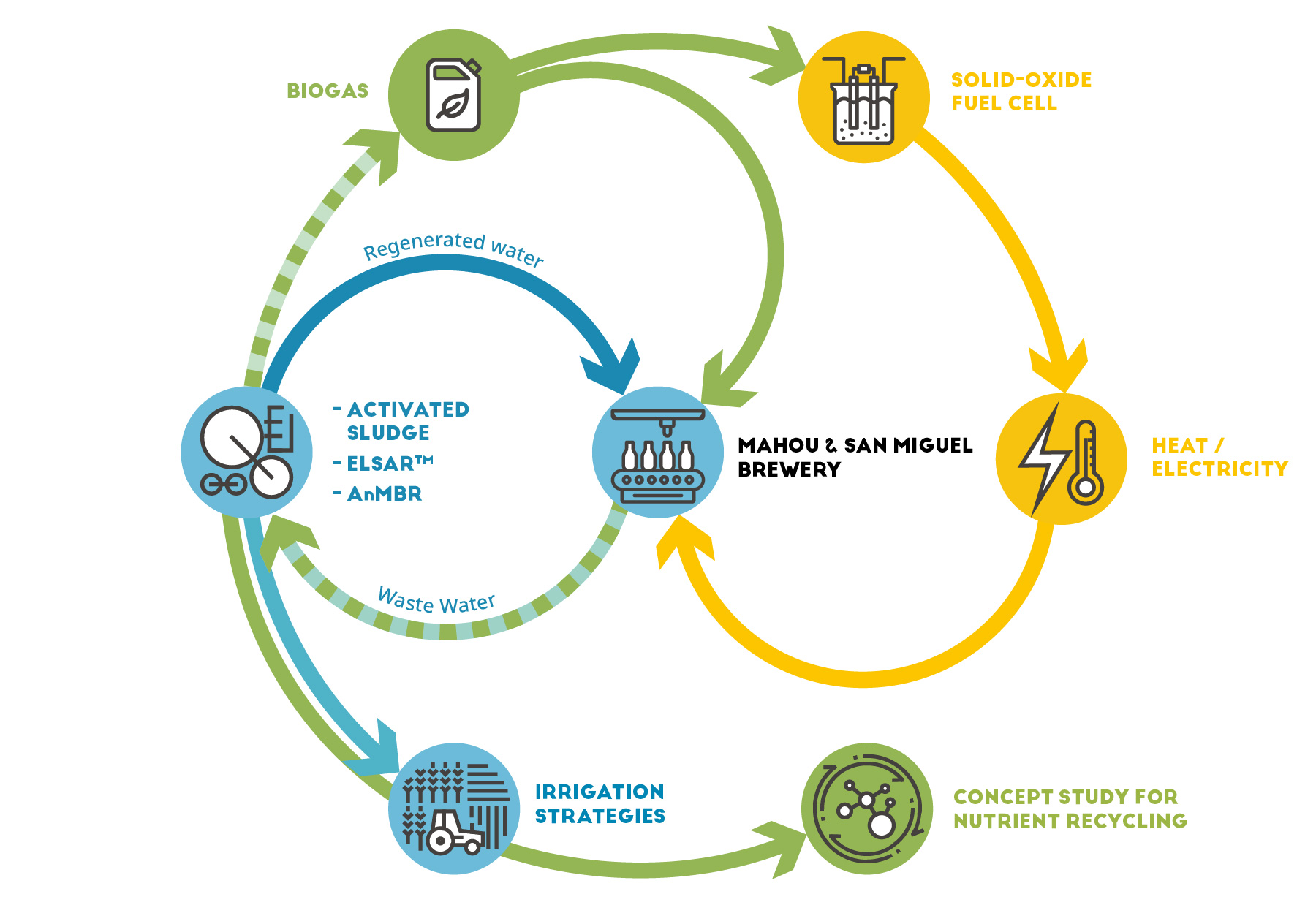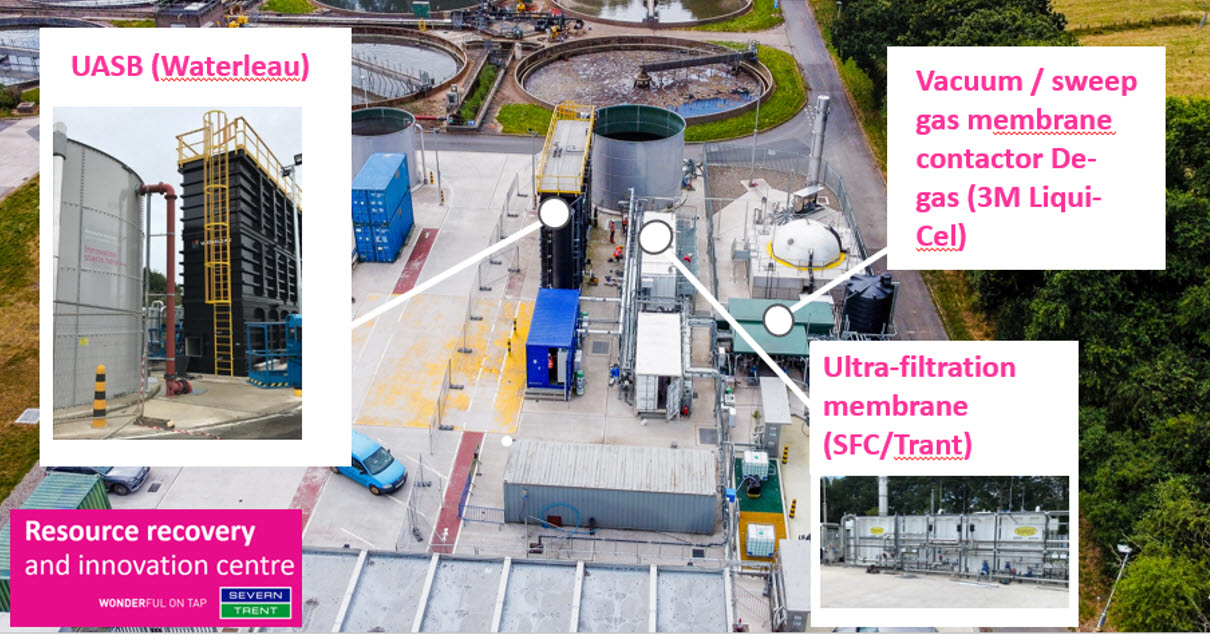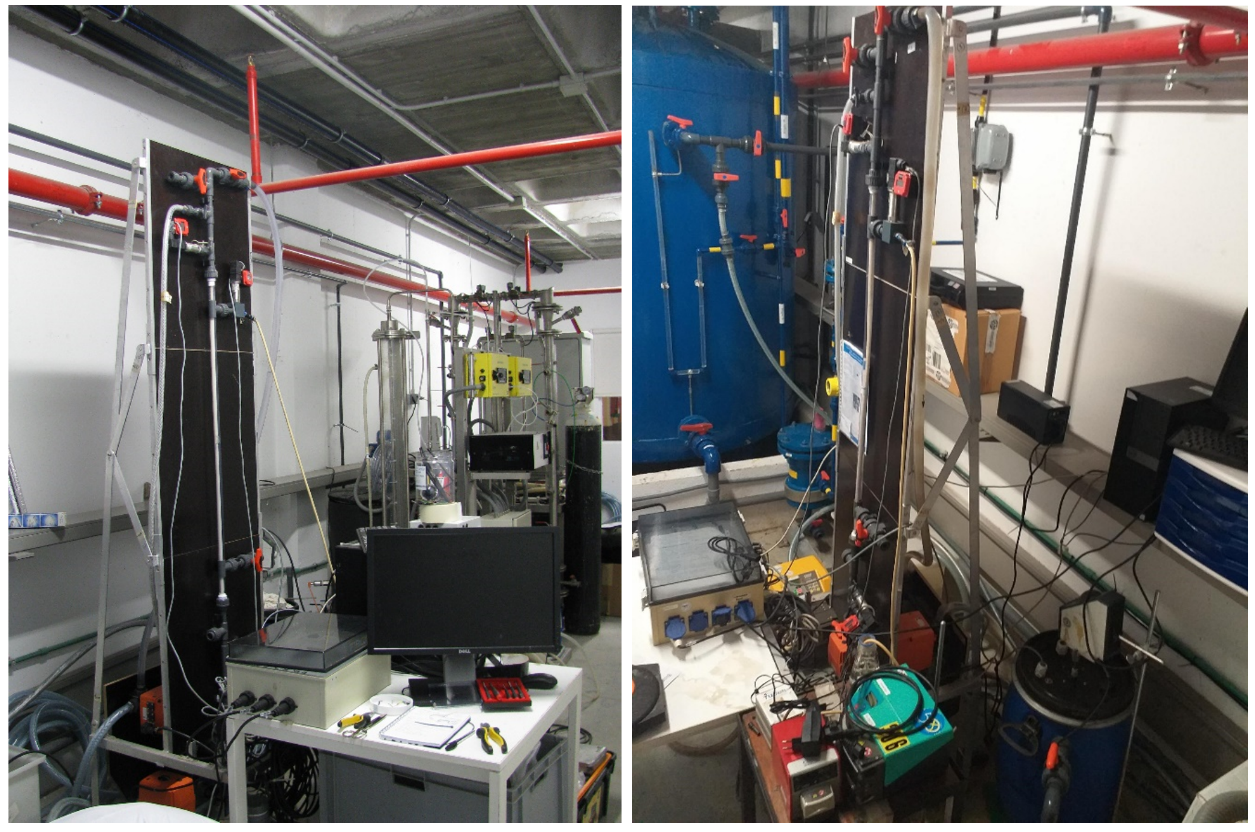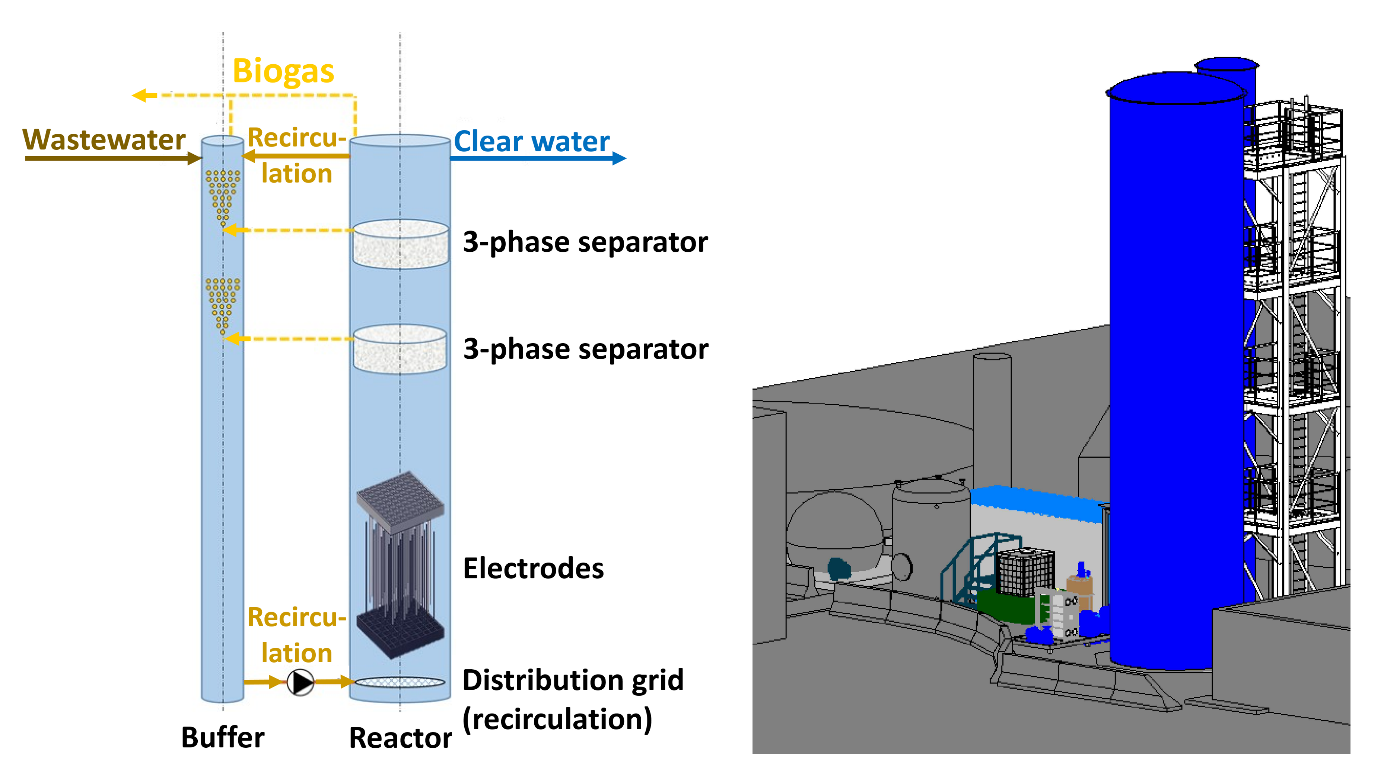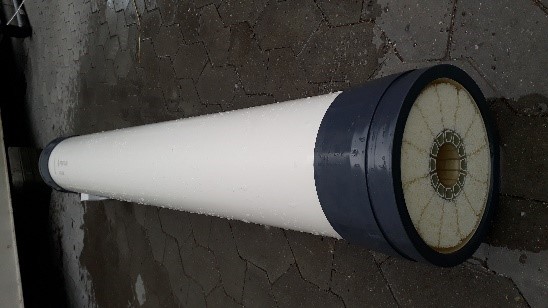Description
In Lleida, a water-smart industrial symbiosis has been in place since 2009, linking the Mahou San Miguel (MSM) brewery with the multinational utility company Aqualia, as well as the local municipal utility company of Lleida and the Catalan Water Agency.
The brewery has its own wastewater treatment plant. However, no water is recovered and no energy is recovered. Mahou San Miguel aims to reduce its water consumption by 10% by 2025, thanks to the ULTIMATE solution for water reclamation, in which Pentair XFlow is actively involved with its nanofiltration technology. In addition, energy will be recovered in the form of biogas and converted as efficiently as possible into electricity and heat by combining the world's first full-scale Electrostimulated anaerobic reactor (ELSAR®) with the solid oxide fuel cell (SOFC). According to preliminary estimates, the excess electricity produced by the proposed ULTIMATE solution could provide a significant proportion of the thermal energy and electricity needs, amounting to 3% and 30% respectively. The anaerobic membrane bioreactor (AnMBR) is also a valid solution for both purposes: to achieve a quality level equivalent to tertiary treatment and to produce biogas. The carbon footprint will also be reduced, in line with Mahou San Miguel's commitment to green energy and self-sufficiency.
Applied technologies
Technology performance and best practices
In the Spanish case study, a new high-rate anaerobic reactor, called electrostimulated anaerobic reactor (ELSAR), was implemented as a full-scale pre-treatment of brewery wastewater. This was the first application of ELSAR on this scale in the world. In addition to the conventional anaerobic digestion processes, an integrated bioelectric system enables electroactive microorganisms to oxidise organic matter and release electrons to the anode, hydrogen ions and CO2. The different biochemical pathways allow for high flexibility and a stable biogas production process. During commissioning, the ELSAR was successfully operated at an organic loading rate (OLR) of 12.5 kg COD/(m³*d) and has the potential to treat 25 kg COD/(m³*d). The COD removal rate was between 90 and 96% and the average methane yield was 0.34 m³ CH4/(kg COD). The ELSAR is able to treat fluctuating OLRs, allows for short stabilisation times after shock loads and has a higher calorific value of the biogas due to a higher H2 content. At the case study level, the ELSAR successfully reduced the energy demand of the industrial wastewater treatment plant by 10%. This was achieved by treating only 33% of the brewery’s wastewater, which is equivalent to 500 m³/d.
The ELSAR system was combined with an anaerobic membrane bioreactor (AnMBR) to improve effluent quality. However, the improved effluent quality did not seem to compensate for the increase in operating costs (gas for sparging, chemicals for cleaning the membranes, etc.) and capital costs for membranes, tank for membranes and pipelines including recirculation, etc. The investigations showed that for an optimal performance of the ELSAR and an AnMBR, equalised, good conditioned, warm sulphate-light and biodegradable wastewaters such as brewery wastewater were essential. The higher the content of biodegradable COD in the substrate was, the greater the benefits over traditional aerated alternatives were, in terms of OPEX and biogas profits. Furthermore, the higher the price of electricity, gas (or heat) or sludge treatment, the more attractive the anaerobic processes became. In order to control fouling under critical flow conditions, the Delft filtration characterisation method (DFCm) was used to characterise the filterability of the sludge to be filtered in MBR systems. The DFCm could contribute to early detection of fouling or permeability decrease. Despite its potential to ensure the stability of the filtration process, the simplicity of DFCm and the inability to determine irreversible fouling were drawbacks that remain challenges for a widespread use among MBRs.
In addition, a solid oxide fuel cell (SOFC) was successfully tested in Lleida at pilot scale using biogas to produce electricity and heat as by-product. Compared to a combined heat and power system, which is the state of the art for producing electricity and heat from biogas, the SOFC had a higher electrical efficiency of 50%. As the Spanish case study had a higher demand for electricity than for heat, the higher electrical efficiency was a big advantage in this case. As a result, 30% more energy could be recovered and reused to replace fossil fuels in Lleida.
In Lleida (ES) ULTIMATE successfully produced high quality water for industrial cooling processes. The effluent from an industrial wastewater treatment plant treating brewery effluent was used for water reclamation. Therefore, nanofiltration, with a molecular weight cut-off of 1 kDa, combined with reverse osmosis was piloted and achieved the required water quality. Plans for large-scale implementations for a similar site as to Lleida are under development.
Outcome of assessments
Life cycle assessment
ELSAR: Using an ELSAR system for anaerobic treatment of brewery wastewater results in an energy-positive process, producing more energy in the form of biogas than is needed for water treatment. This surplus energy is even sufficient to feed a downstream ultrafiltration process for producing reclaimed water for irrigation. Overall, ELSAR has a lower energy demand than an anaerobic membrane bioreactor, while producing comparable amounts of biogas. However, the complete recovery of dissolved methane from the effluent is still a challenge also for ELSAR to prevent the downstream emission of this powerful greenhouse gas to the atmosphere.
SOFC: A solid oxide fuel cell (SOFC) produces a higher share of electricity from biogas compared to a combined heat and power plant, while producing less heat. Consequently, the environmental benefits of an SOFC in reducing greenhouse gas emissions are highest if the substituted grid electricity mix has a high fossil share. At places with a high share of renewables in electricity production, the use of biogas for direct heating (e.g. in a boiler) will be more effective for reducing overall greenhouse gas emissions.
Total cost of ownership (TCO)
The TCO assessment for the ELSAR® system, which integrates anaerobic digestion with bioelectrical processes, demonstrates significant long-term cost savings compared to a conventional activated sludge (CAS) system. In spite of the initial investment required for ELSAR® system, a ELSAR® that could treat the 33.3% of the incoming wastewater could reduce operational costs by decreasing energy consumption and sludge management expenses, resulting in a significant reduction of TCO by 32.8% compared to the baseline scenario using only the CAS system. The ELSAR® system’s ability to generate enriched biogas for energy further contributes to potential savings. A sensitivity analysis indicates that while variations in electricity prices have a modest impact annually, they could influence long-term financial sustainability, highlighting the importance of considering energy costs in investment decisions. On the other side, natural gas prices might have significant impact on TCO.
Concept study to recover struvite
A concept study was carried out to recover struvite by the Aquavite® process from the supernatant of sludge dewatering and nutrients from hydrochar obtained by hydrothermal carbonisation of brewery spent grains and municipal sludge from the Lleida WWTP. The results of the study are that struvite recovery is not economic in the scenario studied and is limited to applications with streams with high P loads. On the other hand, a detailed chemical/physical characterisation of hydrochar is necessary to evaluate the feasibility of fertiliser recovery, which remains theoretical at the concept study level.
Legislation and policy recommendations
Clarifying responsibilities and developing consistent guidelines for water reuse licensing and service provision across the EU are essential to ensure effective practices. The strategic agenda proposes comprehensive coverage of all water reuse types, emphasizing safety, environmental impact assessment, and the integration of reclaimed water into local water balances based on regional circumstances. Future regulations should establish minimum standards for non-agricultural uses, enhance risk assessment, and promote research on innovative water reuse technologies and practices. (see also D1.10)
To replicate biogas production and valorisation technologies in Europe, stable prices for upgraded biogas and electricity are needed at least for a period of five years to amortise the plant. Another five years would be beneficial, after an adaption on the energy market, to provide incentives to the investors. To bridge a potential gap between the guaranteed price and the actual market price, subsidies might be needed. A minimum quota for upgraded bio-methane in the gas grid can further support the willingness of investors to implement biogas production technologies and upgrading units. A simplification of administrative formalities and financial support related to the gas grid connection can highly accelerate the implementation of biomethane producing technologies. (see also D1.10)
Applied product
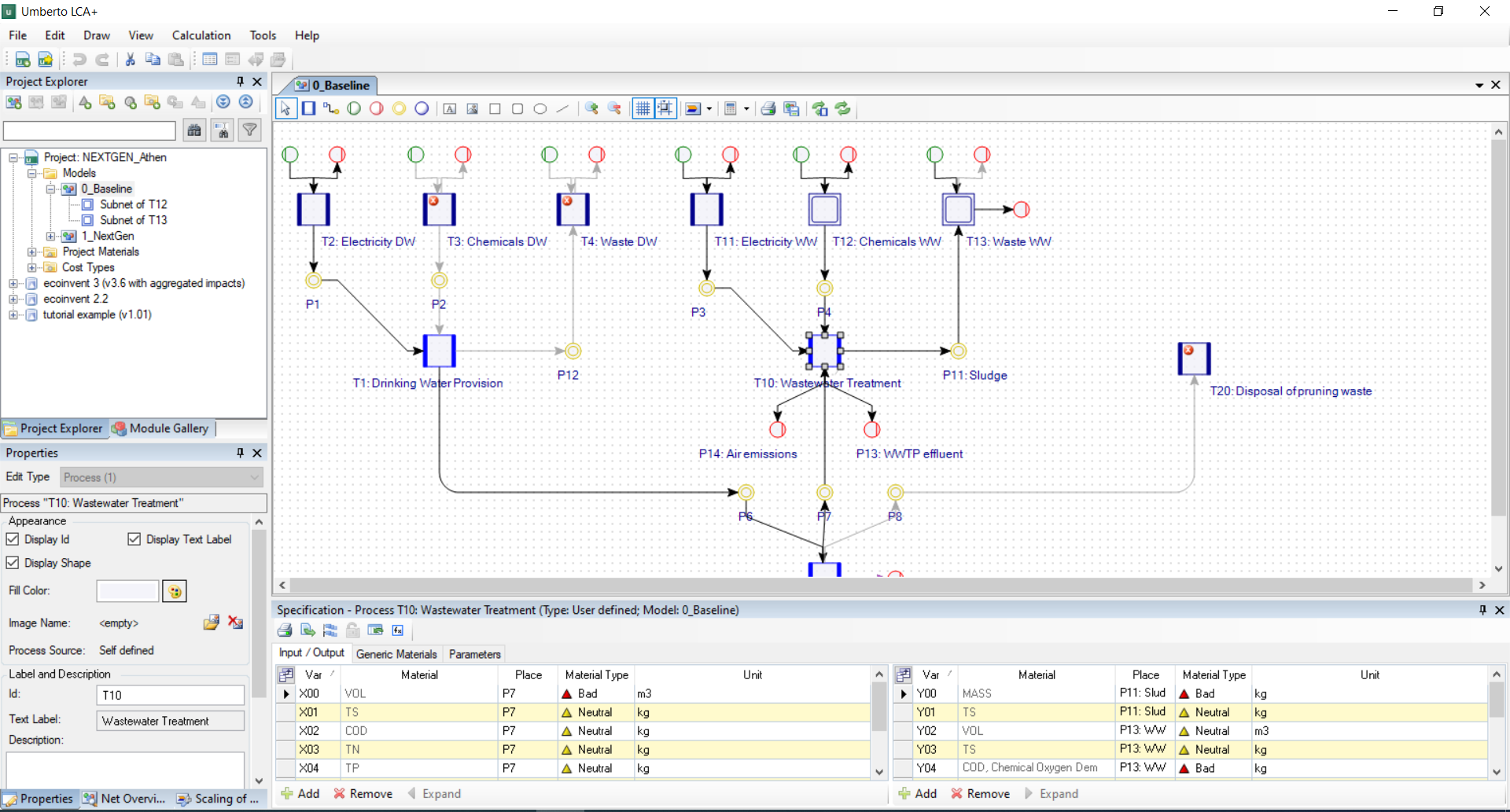
NEXTGEN + ULTIMATE Life Cycle Assessment
Life Cycle Assessment is a standardized framework (ISO 14040) for assessing the potential environmental impacts of a pr…


